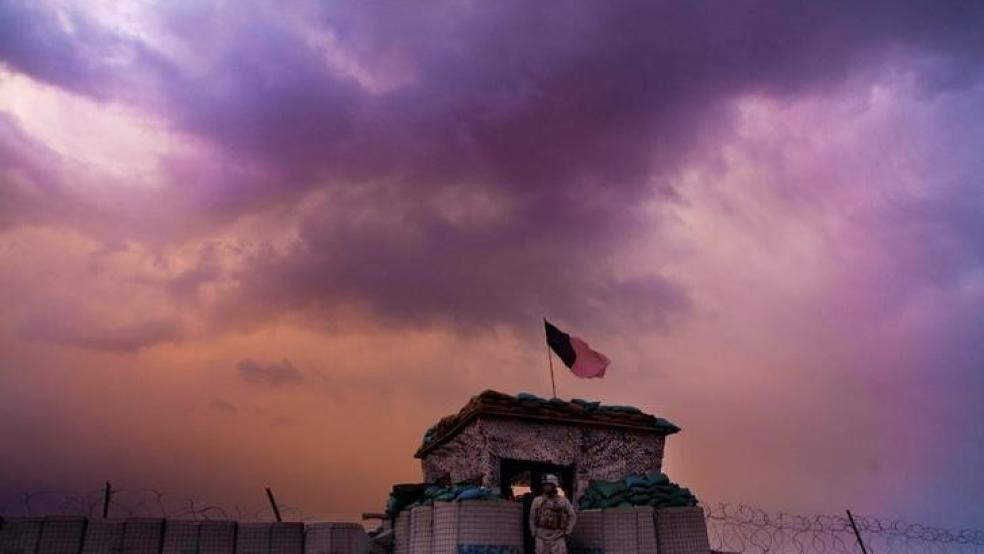On July 25, the U.N. Assistance Mission in Afghanistan released its latest quarterly report on civilian casualties from the war. Afghanistan was already one of the most dangerous places in the world to be a civilian, but the findings of the investigation were even worse than observers and U.S. officials expected: between January 1, 2016 to June of this year, the fighting killed 1,601 civilians and injured another 3,565.
“This represents an increase of four percent in the total number of casualties compared to the first six months of 2015,” the head of the U.N. mission said, “and is the highest half-year total since 2009.”
Related: Can the US Buy Peace in Afghanistan?
The dismal figures from the U.N. are just the most recent in a stack of reports from the U.N. Secretary General and the U.S. government that describe an extremely dire security situation in the country, nearly 15 years since the U.S. and its NATO allies embarked on a mission that has dragged on for over a decade. Secretary General Ban Ki-moon’s own assessment of the war to the Security Council is a good summation of what many Americans and Europeans have long suspected: insurgent violence is up, the Afghan government is still riven by factional disputes and an exceedingly slow process of appointing and confirming ministers, the Afghan army and police force is getting beaten up in the field, and chunks of rural Afghanistan are either administered or influenced by anti-government elements.
“In the first four months of 2016,” Ban wrote, “reports indicated rising casualties among the security forces. The sustainability of the forces remains a challenge in the light of high attrition rates. Even though recruitment was on target, re-enlistment rates remained particularly low and needed to be increased to compensate for other losses.”
The result of this attrition? A 5 percent decrease in the amount of territory the Afghan government controls, from 70.5 percent to 65.6 percent. Over one-third of the country’s districts are either under insurgent control or “at risk” of being captured or challenged by the Taliban.
The Obama administration has taken these statistics seriously, responding to the situation as they have done throughout the past seven-and-one-half years: escalating the amount of force the U.S. military is allowed to use and slowing the scheduled withdrawal of U.S. troops. For all of the GOP’s complaints about President Obama handcuffing of the military and his resistance to providing the generals running the war with more resources, money, firepower, and support, the fact is that Obama has been quite deferential to military leaders and the Pentagon. His original plan to withdraw all U.S. trainers and advisers from Afghanistan by the end of 2016 has been delayed repeatedly — first in March 2015, when Obama decided to provide President Ashraf Ghani with the full force of 9,800 troops through 2015 and again in October, when he extended the same force level through most of 2016.
Related: Six Years and $17 Billion Wasted in Afghanistan with Nothing to Show for It
The administration seems muddled about how to ensure that U.S. gains in Afghanistan are kept and built upon. Recognizing that Afghan security forces are struggling against the Taliban and continuing to take unsustainable casualties, Washington again has decided that being more aggressive is the right answer. Rather than stick with its goal of withdrawing to 5,500 U.S. troops into the next administration, the White House will now keep 8,400 into next year. U.S. pilots have been granted more authority to not only defend Afghan units in the field who are attacked, but aid those same forces when they engage in offensive operations against the Taliban. In some cases, American advisers will also be permitted to embed with their Afghan counterparts during those operations.
As in the U.S. troop surge from 2010-12, putting more American boots on the ground will produce positive results on the battlefield in the short-term. No fighting force in the world can compete with the U.S. soldier, so more of them will naturally help the Afghan security forces reclaim districts in remote areas. But as with the surge, security and stability in Afghanistan will likely deteriorate as soon as those U.S. assets and authorities are taken away. This assessment is borne out by the facts: less than four years after U.S. surge forces were withdrawn, the Taliban hold more territory than they have since the war began in October 2001.
After providing nearly $70 billion in security assistance, Washington is still looking at an Afghanistan that cannot sustain itself, defend itself, and whose national economy is so weak that it depends on the international community to pay for its army and police, to the tune of $5 billion per year through 2020. What happens after that, and whether U.S. and NATO officials will reassess and tie their presence and strategy to Afghan government performance, is anyone’s guess.
According to U.K. Defense Secretary Michael Fallon, “This is the wrong time to walk away from Afghanistan.” But this begs the question: will there ever be a right time to leave Afghanistan? And if the answer is no, is maintaining thousands of troops on the ground and pumping another $70 billion into Afghanistan’s army the best way to keep the U.S. and Europe safe from another terrorist attack? Or are there other ways to do the same thing, but without a multi-decade military commitment?
One hopes that the next President will ask these important questions before continuing with the status quo.
This article originally appeared on Defense One. Read more from Defense One:
Saudi Losses in Yemen War Exposed by US Tank Deal
ISIS Is Switching Tactics in Iraq. Baghdad Needs to Get Its Act Together
This is the War Against al-Qaeda the Next US President Will Inherit

